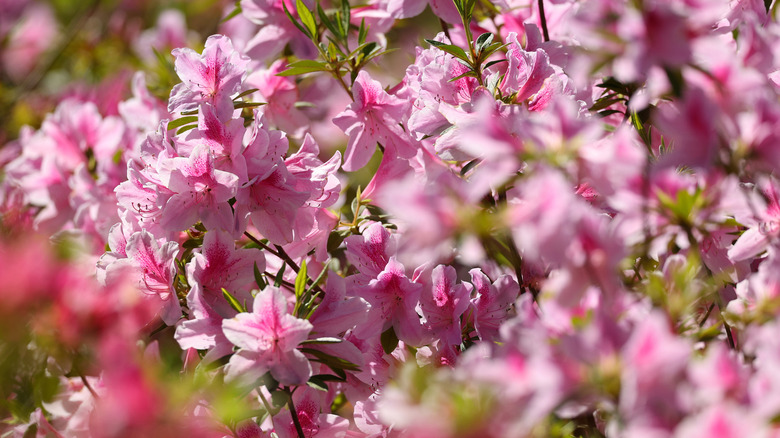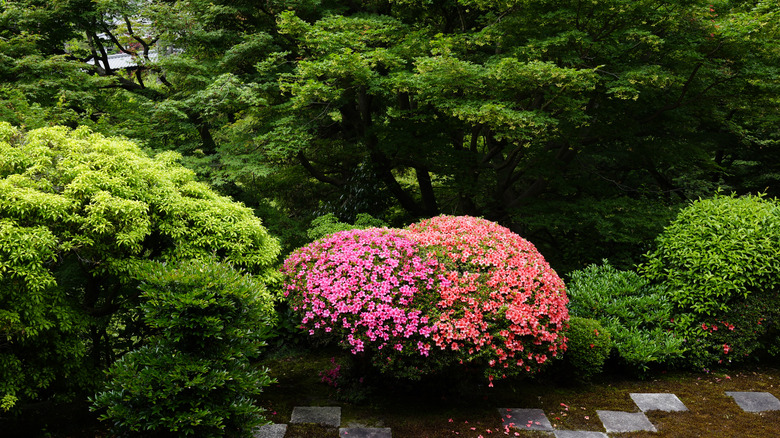The Best Spot In Your Garden To Plant Azaleas For Stunning Blooms
Azaleas (Rhododendron spp), with their profusion of dark lavender, watermelon pink, peachy orange, pure white, and deep red blooms, add a showy burst of color to your landscape. Planted in the right spot and well-maintained, a single variety of azalea can bloom for three months. If you plant varieties with different blooming times, you'll have a summer-long profusion of blossoms that can attract hummingbirds and butterflies. While a handful of azalea varieties can grow in full sun, most prefer a well-drained, protected, shady spot in your landscape.
Choose a garden spot away from hard surfaces like sidewalks and driveways that radiate heat. A spot with morning sun and filtered afternoon shade is best, but don't plant azaleas under trees that might compete with the shrubs for water. Avoid spots where wind might dry out the leaves or with soil that stays wet, a condition that leads to root rot. Don't choose a spot where the soil has a high clay content. Test your soil's drainage by digging a foot-deep hole and filling it with water. Let it drain, refill it, and see how long it takes to drain again. If it takes less than an hour, your soil has good drainage.
The grayanotoxins in azalea leaves are poisonous if ingested. Call your doctor or poison control immediately if you see symptoms like numbness in your mouth, nausea, or confusion.
How to care for your azaleas after planting
The Royal Horticultural Society's International Rhododendron Register lists over 800 species of azaleas and their cousins, rhododendron. They're hardy in USDA growing zones 5 to 9, making it easy to find a suitable variety for your region. You're likely to find azaleas grown in containers at your nursery — they can be planted year-round, but spring and fall are best so the plants have time to establish themselves before it gets hot. Plant bare-root bushes, or plants not sold in a container, in winter. Send a soil sample to your extension office or buy a home test kit to measure the pH of your soil before planting. Azaleas prefer a pH between 4.5 and 6.0, so it might be necessary to make the soil more acidic to create ideal conditions.
Once you've chosen a spot with the right amount of sun, good drainage, and protection from the wind, remove the azalea from the container and set it in a hole that's two to three times as wide as the container. Mix compost and peat moss into the soil you've dug up and backfill the hole. Water thoroughly and spread 3 to 4 inches of mulch around the azalea. Fertilize your bushes in early spring and again in early summer with a product developed for azaleas. For spring plantings, water the plants twice a week. Otherwise, check the soil — if it feels dry, it's time to water. With proper care and planting, your azalea bush will provide gorgeous blooms for years to come.

